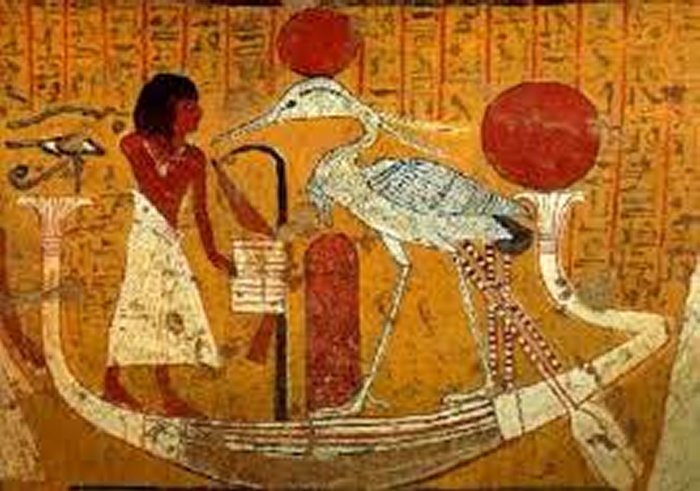Mythical Egyptian Bennu Bird And Deity
A. Sutherland - AncientPages.com - The Bennu is an ancient Egyptian deity linked with the sun, creation, and rebirth. It may have been the inspiration for the phoenix in Greek mythology.
According to Egyptian mythology, the Bennu was a self-created being. This being played a role in the creation of the world. It was said to be the ba of Ra and enabled the creative actions of Atum.
According to Egyptian mythology, the Bennu was a self-created being. The Egyptian meaning of the Bennu is 'palm tree' and also 'purple heron'. This bird is clearly associated with the Phoenix and its legend is associated with the Bennu. The Bennu bird has red and golden plumage and is the sacred bird of Heliopolis, one of the oldest cities of ancient Egypt. Sacred Bennu has been also interpreted as the reincarnation of the Gods Ra and Osiris. Heliopolis is referred to as the City of the Sun and is known as one of the oldest Egyptian cities.
The ancient Egyptians believed the Bennu created itself from a fire that burned upon a holy tree in the temple of Ra and yet others believed that it exploded from the heart of Osiris.
It was said to have flown over the waters of Nun that existed before creation, landing on a rock and issuing a call that determined the nature of creation. It was also a symbol of rebirth and was therefore associated with Osiris.
Some of the titles of the Bennu bird were "He Who Came Into Being by Himself", and "Lord of Jubilees"; the latter epithet referred to the belief that the Bennu periodically renewed itself like the sun. Its name is related to the Egyptian verb wbn, meaning "to rise in brilliance" or "to shine".
The Pyramid Texts refer to the yellow wagtail as a symbol of Atum, and it may have been the original form of the Bennu bird. New Kingdom artwork shows the Bennu as a grey heron with a long beak and a two-feathered crest, sometimes perched on a benben stone (representing Ra) or in a willow tree (representing Osiris). Because of its connection with Osiris, it sometimes wears the atef crown.
‘Benu’-bird (the Phoenix). Inerkhau ("Onuris appears" - Onuris was a Greek inflection of the name of the god Iny-Hor) who was the son of Hay and his wife was named Wabet. - here: worshipping the Benu-bird, the sacred phoenix wearing the Atef-Crown. Bennu bird - a symbol of resurrection.
A large species of heron, currently extinct, lived on the Arabian Peninsula in comparatively recent times; it may have been the ultimate inspiration for the Bennu. Reflecting this, the species was described as the Bennu heron (Ardea bennuides). Like Atum and Ra, the Bennu was probably worshipped in their cult center at Heliopolis. It also appears on funerary scarab amulets as a symbol of rebirth.
According to the Greek historian Herodotus, who wrote about Egypt in the fifth century BC, the priests at Heliopolis described the phoenix to him. They said it lived for 500 years before building its own funerary pyre and setting it alight.
The newborn offspring of the previous phoenix rose from the ashes of this fire and carried them to Heliopolis, depositing them on the temple's altar. Greek descriptions of the phoenix liken it to an eagle with red and gold plumage, reminiscent of the sun or of flames.
The name of the phoenix could be derived from "Bennu", and its rebirth and connections with the sun resemble those of the Bennu bird, although Egyptian sources do not mention the bird's death.
Written by A. Sutherland - AncientPages.com Staff Writer
Copyright © AncientPages.com All rights reserved. This material may not be published, broadcast, rewritten or redistributed in whole or part without the express written permission of AncientPages.com
More From Ancient Pages
-
 Petroglyphs Hold Secrets To 14,000 Years Of Human Life In Iran
Archaeology | Apr 30, 2020
Petroglyphs Hold Secrets To 14,000 Years Of Human Life In Iran
Archaeology | Apr 30, 2020 -
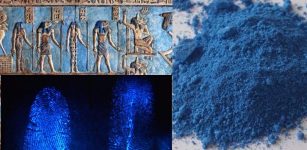 Ancient Egyptian Blue Powder Makes Fingerprints Glow And Will Be Used By Crime Scene Investigators
Ancient Technology | Jun 15, 2017
Ancient Egyptian Blue Powder Makes Fingerprints Glow And Will Be Used By Crime Scene Investigators
Ancient Technology | Jun 15, 2017 -
 Controversial ‘Anomaly’ Discovered On Mount Ebal Could Be Biblical Joshua’s Altar
Biblical Mysteries | Apr 6, 2020
Controversial ‘Anomaly’ Discovered On Mount Ebal Could Be Biblical Joshua’s Altar
Biblical Mysteries | Apr 6, 2020 -
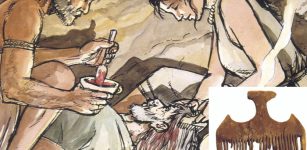 Evidence Of Hallucinogenic Drug Use During Bronze Age Ceremonies Found
Archaeology | Apr 6, 2023
Evidence Of Hallucinogenic Drug Use During Bronze Age Ceremonies Found
Archaeology | Apr 6, 2023 -
 Largest Ever Human Family Tree: 27 Million Ancestors Mapped
Archaeology | Feb 25, 2022
Largest Ever Human Family Tree: 27 Million Ancestors Mapped
Archaeology | Feb 25, 2022 -
 Ancient Tools Found In Maryland Re-Write The History Of First Humans In America
Archaeology | May 29, 2024
Ancient Tools Found In Maryland Re-Write The History Of First Humans In America
Archaeology | May 29, 2024 -
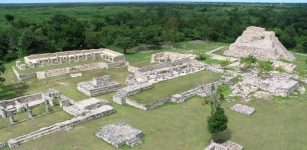 Mayapan: How The Last Big Mayan City Met Its End
Featured Stories | Jul 26, 2017
Mayapan: How The Last Big Mayan City Met Its End
Featured Stories | Jul 26, 2017 -
 Khufu Boat And Unique Boat-Building Technique Of Ancient Egyptians
Artifacts | Jun 20, 2017
Khufu Boat And Unique Boat-Building Technique Of Ancient Egyptians
Artifacts | Jun 20, 2017 -
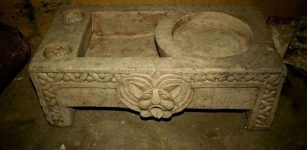 Roman-Era Residence Unearthed In Ancient Capital Of Memphis, Egypt
Archaeology | Sep 27, 2018
Roman-Era Residence Unearthed In Ancient Capital Of Memphis, Egypt
Archaeology | Sep 27, 2018 -
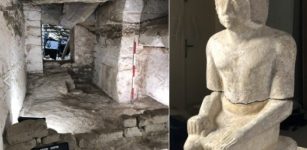 Ancient Tomb Of Exceptional Priest Kaires – The Sole Friend And Keeper Of The Secret Of The Morning House Discovered In Egypt
Archaeology | Oct 9, 2018
Ancient Tomb Of Exceptional Priest Kaires – The Sole Friend And Keeper Of The Secret Of The Morning House Discovered In Egypt
Archaeology | Oct 9, 2018 -
 Archaeologists uncover new Yup’ik artifacts near Quinhagak, Southwest Alaska
Artifacts | Aug 28, 2015
Archaeologists uncover new Yup’ik artifacts near Quinhagak, Southwest Alaska
Artifacts | Aug 28, 2015 -
 Fossil Of Prehistoric Saber-Toothed Cat Found In Texas
Fossils | Jun 11, 2024
Fossil Of Prehistoric Saber-Toothed Cat Found In Texas
Fossils | Jun 11, 2024 -
 Enigma Of San Bernardo Mummies That Refuse To Decompose
Featured Stories | Nov 7, 2018
Enigma Of San Bernardo Mummies That Refuse To Decompose
Featured Stories | Nov 7, 2018 -
 Catherine Of Alexandria Courageously Confronted 50 Pagan Philosophers And Was Sentenced To Death
Featured Stories | Oct 15, 2018
Catherine Of Alexandria Courageously Confronted 50 Pagan Philosophers And Was Sentenced To Death
Featured Stories | Oct 15, 2018 -
 Svarog: God Of Cosmic Fire And Ruler Of The Sky In Pre-Christian Slavic Pantheon
Featured Stories | Aug 15, 2017
Svarog: God Of Cosmic Fire And Ruler Of The Sky In Pre-Christian Slavic Pantheon
Featured Stories | Aug 15, 2017 -
 Race Against Time: Crucial Expedition To Delve Into Bouldnor Cliff, Europe’s Mesolithic Underwater Stone Age Site
Underwater Discoveries | Apr 28, 2024
Race Against Time: Crucial Expedition To Delve Into Bouldnor Cliff, Europe’s Mesolithic Underwater Stone Age Site
Underwater Discoveries | Apr 28, 2024 -
 Ancient Indigenous Carvings On Boab Trees – Time To Rescue Ancient Art Before Trees Disappear
Archaeology | Oct 12, 2022
Ancient Indigenous Carvings On Boab Trees – Time To Rescue Ancient Art Before Trees Disappear
Archaeology | Oct 12, 2022 -
 One-Eyed Giants Fachan Were As Dangerous As Polyphemus And The Cyclops
Celtic Mythology | May 21, 2019
One-Eyed Giants Fachan Were As Dangerous As Polyphemus And The Cyclops
Celtic Mythology | May 21, 2019 -
 Search For A Viking Cemetery Near Truso Settlement In Janow, Poland – Continues
Archaeology | Jul 23, 2020
Search For A Viking Cemetery Near Truso Settlement In Janow, Poland – Continues
Archaeology | Jul 23, 2020 -
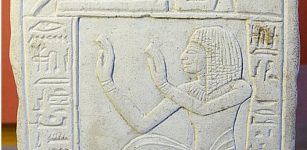 Meretseger: Theban Cobra Goddess Who Presided Over The Valley of The Kings
Egyptian Mythology | Jul 10, 2021
Meretseger: Theban Cobra Goddess Who Presided Over The Valley of The Kings
Egyptian Mythology | Jul 10, 2021


